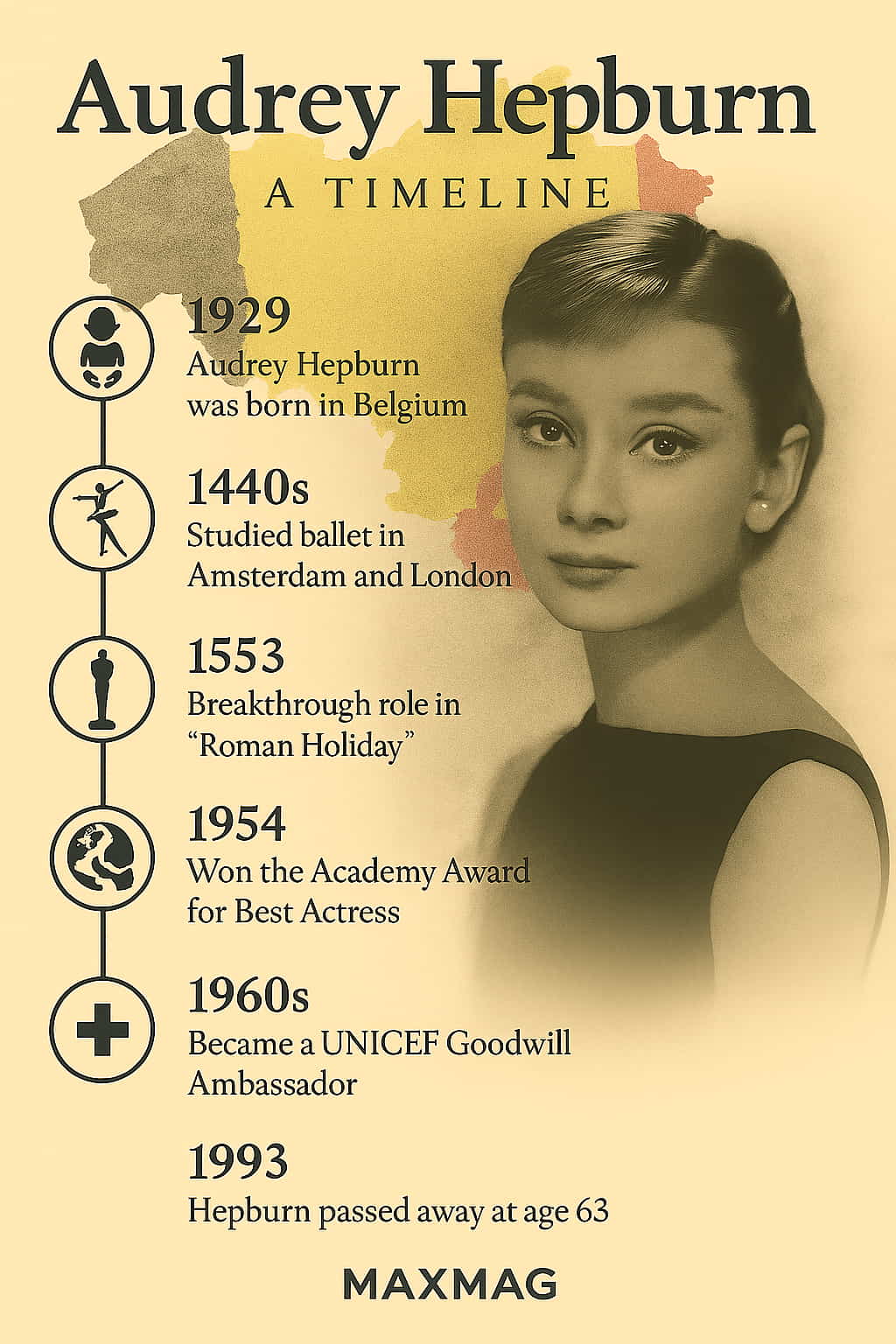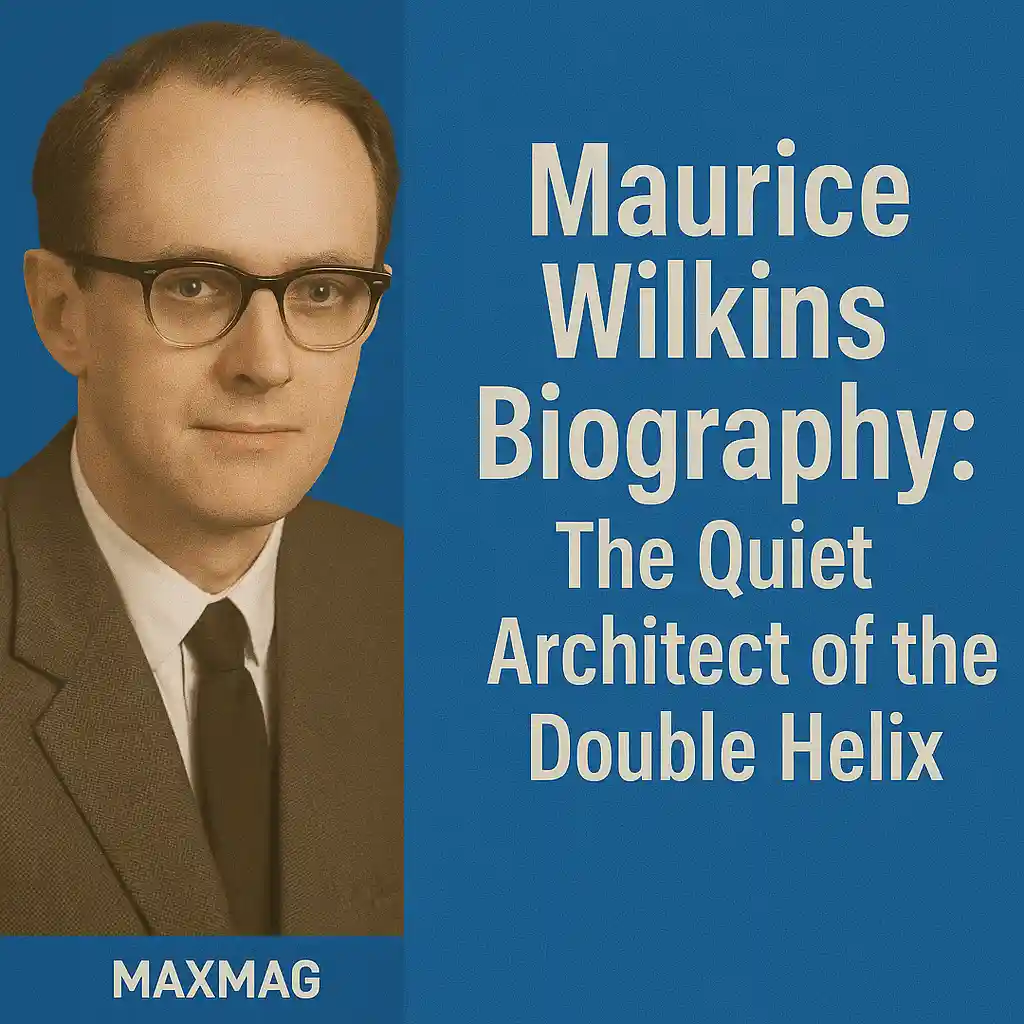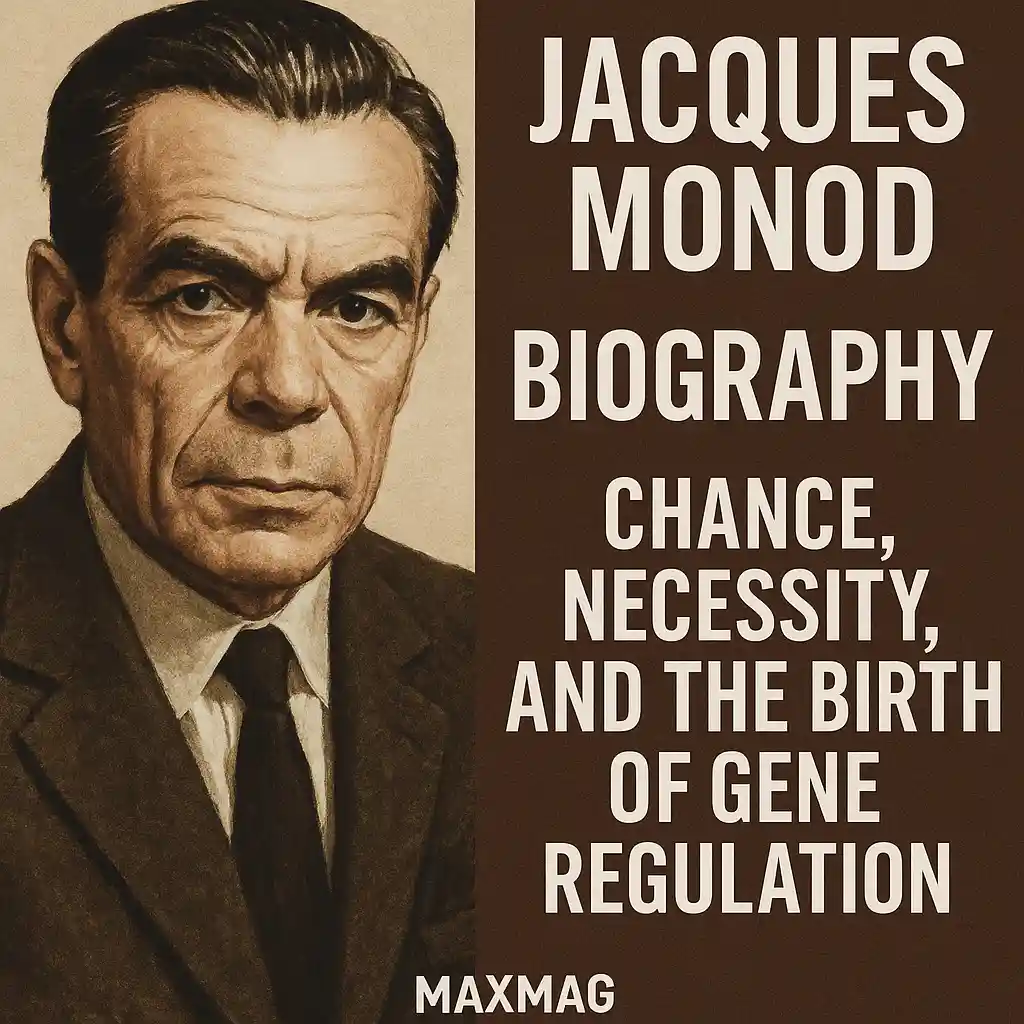
Long after the final scene fades to black, Audrey Hepburn remains an emblem of elegance—not just in the way she dressed, but in how she lived. With her delicate features, swan-like posture, and soft-spoken presence, she captivated the world through more than just acting. Audrey Hepburn elegance wasn’t about trends; it was a quiet revolution—a personal style rooted in humility, poise, and kindness. In this article, we trace how this legendary figure crafted a life of aesthetic simplicity and moral richness that still resonates today.
A Fragile Childhood in a Violent Time
Audrey Kathleen Ruston was born on May 4, 1929, in Brussels, Belgium. Her early years were anything but glamorous. Growing up during World War II in Nazi-occupied Netherlands, she endured severe hunger and witnessed wartime atrocities firsthand. Food was so scarce during the Dutch famine of 1944–45 that Hepburn developed lifelong health complications. Despite these hardships, she secretly trained in ballet and even performed underground recitals to raise money for the resistance.
It was here—in the darkness of war—that her inner light began to grow. The strength she developed through suffering would later shape the calm dignity that defined Audrey Hepburn elegance on screen and off.
Broadway Calling: From Dancer to Discovery
After the war, Audrey pursued ballet more seriously in Amsterdam and London, but her tall frame limited her prospects in a competitive field. She began to accept small acting roles to support herself. Her breakthrough came in 1951 when French author Colette, spotting her natural charm during a screen test, insisted she play the lead in the Broadway adaptation of Gigi.
She took New York by storm. Critics adored her and audiences were mesmerized. Her mix of shyness and confidence felt rare and utterly genuine. Audrey wasn’t trying to impress; she simply was.
Roman Holiday: A New Kind of Star is Born
Two years later, director William Wyler cast her opposite Gregory Peck in Roman Holiday. It was her first leading film role—and an unforgettable one. Playing a rebellious princess on the run, she delivered a performance full of innocence, wit, and subtle power. She won the Academy Award for Best Actress in 1954, along with a BAFTA and a Golden Globe. Her career was instantly launched into the stratosphere.
But the real phenomenon wasn’t just her acting—it was her presence. She didn’t radiate Hollywood glamour in the traditional sense. She was graceful without arrogance, fashionable without pretense. From this point on, Audrey Hepburn elegance became a cultural reference point in its own right.
Audrey Hepburn Elegance in Fashion
Her most iconic style chapter began when she met French designer Hubert de Givenchy during the filming of Sabrina. Although he initially mistook her for Katharine Hepburn, the two would go on to form one of the most influential partnerships in fashion history. Givenchy understood Audrey’s essence and created clothing that let it shine.
Her look was defined by minimalist sophistication: clean lines, monochrome palettes, cigarette pants, ballet flats, and structured dresses. From the unforgettable little black dress in Breakfast at Tiffany’s to the crisp white gowns in My Fair Lady, her outfits were never just costumes—they were statements of identity.
Even today, leading fashion publications like Harper’s Bazaar and Vogue continue to rank Hepburn’s wardrobe among the most iconic in cinematic history. But her fashion didn’t stop at film. Off-screen, she remained effortlessly stylish in simple ensembles—button-down shirts, wide-brimmed hats, trench coats. Never overdone. Always intentional.
Roles that Redefined Femininity
Audrey Hepburn starred in a string of memorable films that allowed her to showcase more than just beauty—they revealed range, wit, and vulnerability.
-
Sabrina (1954): A modern Cinderella story where Hepburn’s transformation from chauffeur’s daughter to Parisian sophisticate mirrors her own career arc.
-
Funny Face (1957): A musical where she danced and modeled through the streets of Paris—highlighting her background in ballet.
-
Breakfast at Tiffany’s (1961): Perhaps her most defining role, as the mysterious Holly Golightly. Her black dress and pearl necklace are now fashion folklore.
-
Charade (1963): A stylish thriller with Cary Grant, combining mystery, romance, and humor.
-
Wait Until Dark (1967): A blind woman fending off a home invasion, showing her capacity for psychological depth and suspense.
These roles allowed her to present a new type of femininity: intelligent, independent, but always empathetic. And with each performance, Audrey Hepburn elegance gained new dimension.
Motherhood and a Shift in Priorities
By the early 1970s, Hepburn had started to withdraw from acting, preferring to focus on raising her two sons, Sean and Luca, from her marriages to Mel Ferrer and later Andrea Dotti. She chose family and privacy over fame—something rare among stars of her magnitude.
She occasionally returned to the screen, most notably in Robin and Marian (1976) and Always (1989), but her primary focus had shifted to something greater.
A Humanitarian Heart: Audrey and UNICEF
In 1989, Audrey Hepburn accepted the role of UNICEF Goodwill Ambassador—a position she embraced with passion and sincerity. She traveled to famine-stricken countries including Ethiopia, Bangladesh, Vietnam, and Somalia, often spending weeks in the field helping children and mothers.
She didn’t just lend her name—she lent her time, her energy, her voice. Hepburn testified before the U.S. Congress and spoke at the United Nations, urging global support for humanitarian causes. Her legacy in this field is so revered that UNICEF USA continues to feature her contributions as a model of celebrity activism done right.
In 1992, she was awarded the Presidential Medal of Freedom, one of America’s highest civilian honors, for her work with UNICEF. She passed away just months later in January 1993, after a brief battle with cancer.
H3: Why Audrey Hepburn Elegance Still Resonates
Over thirty years after her death, Hepburn’s name still evokes more than nostalgia. She represents an aspirational ideal of beauty that is never superficial and style that begins in the soul.
-
Fashion retrospectives continue to feature her work.
-
Designers from Ralph Lauren to Clare Waight Keller cite her as inspiration.
-
Her image is reproduced on everything from posters to coffee mugs—not because of celebrity culture, but because of meaning.
True elegance, as she demonstrated, is not what you wear. It’s how you treat others. It’s in your words, your choices, your legacy.
Life Lessons Inspired by Audrey
-
Choose kindness over popularity. Audrey once said, “For beautiful eyes, look for the good in others.”
-
Simplify your wardrobe. A few well-chosen pieces that suit your personality are more powerful than chasing trends.
-
Speak softly, but with conviction. She never shouted to be heard. Yet the world listened.
-
Dedicate your time to causes that matter. Her late-life humanitarianism shows that elegance deepens with purpose.
FAQ
Q: What made Audrey Hepburn’s style so iconic?
Her look combined simplicity with sophistication—think clean lines, neutral tones, and a refined silhouette. But what set her apart was the grace and sincerity she projected from within.
Q: Did Audrey Hepburn have a background in fashion?
While not a trained designer, she developed her style instincts early and collaborated closely with couturiers like Givenchy, who credited her as a muse.
Q: What did she do after retiring from acting?
She devoted herself to humanitarian work, especially with UNICEF, traveling to over 20 countries to advocate for children’s rights.
Q: Is her legacy still alive today?
Absolutely. From fashion campaigns to humanitarian causes, her influence is stronger than ever. She remains a reference point in culture and conscience.
Q: How can I embody Audrey Hepburn elegance in my own life?
Focus on authenticity, compassion, and simplicity. Audrey showed us that true style begins with character.






